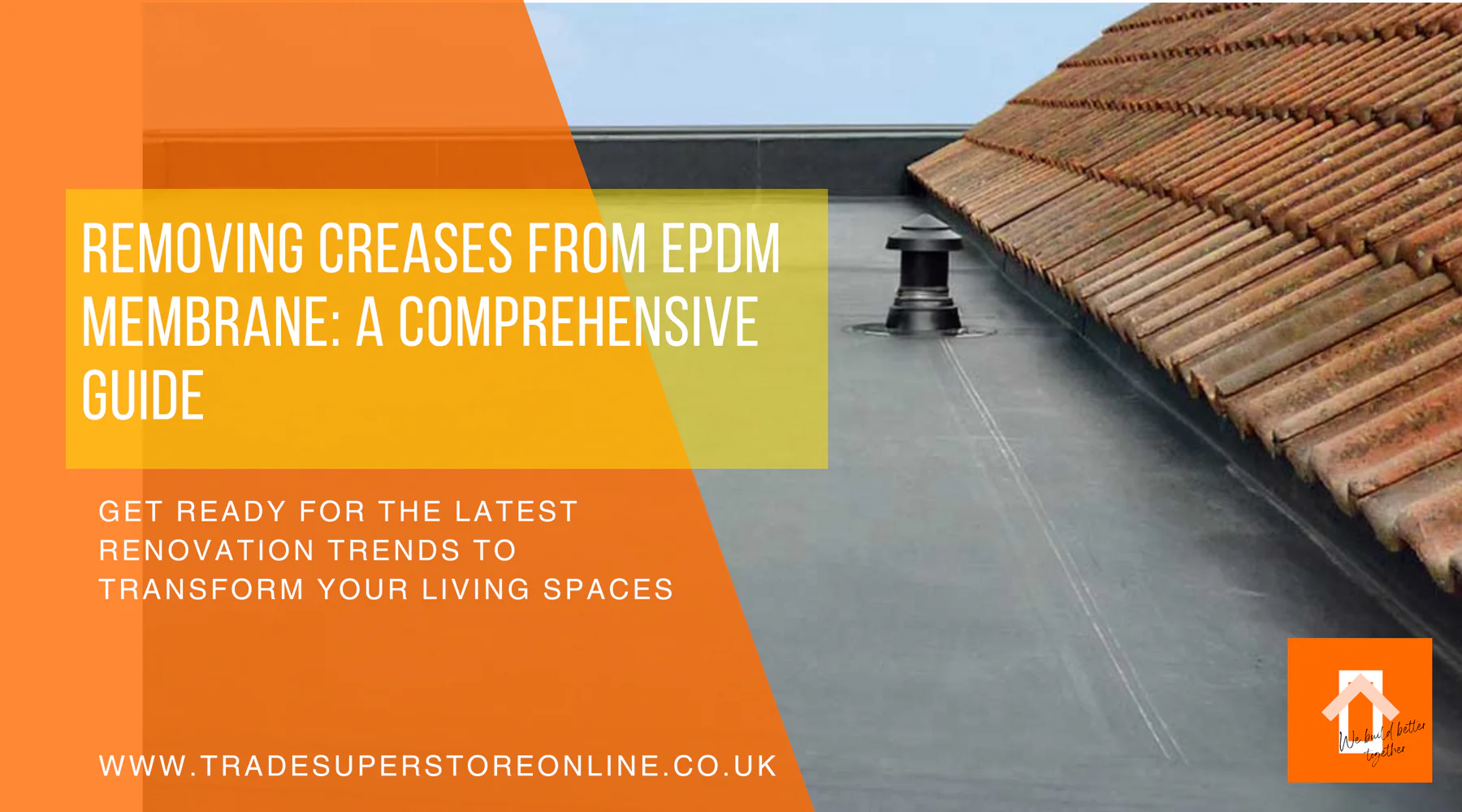
Removing Creases from EPDM Membrane: A Comprehensive Guide
If you're tackling a DIY roofing project, you might encounter creases in your EPDM (Ethylene Propylene Diene Monomer) membrane. These creases can compromise the membrane's performance and durability. In this tutorial, we’ll show you an effective method to remove creases from EPDM membranes using simple roof equipment. Whether you're a seasoned pro or a DIY home improvement enthusiast, these steps will help you achieve a smooth and secure EPDM application.
Step One: Prepare the EPDM Membrane
First, lay out the creased EPDM membrane on a flat working surface. Make sure the surface is clean and free of any debris that could damage the membrane. Smooth the membrane out with your hands to remove any obvious folds or wrinkles. This initial step sets the foundation for an effective crease removal process.

Fig 1: Laying out the creased EPDM membrane.
Step Two: Apply Heat
Using a heat gun, gently heat the surface of the EPDM membrane. A heat gun is essential roof equipment for this step because it allows you to control the temperature and direction of the heat. Move the heat gun back and forth over the creased areas, being careful not to burn the membrane. As the membrane heats up, it will become more pliable, making it easier to smooth out the creases.

Fig 2: Heating the EPDM membrane and smoothing with the silicon roller.
Step Three: Smooth with a Silicon Roller
Once the membrane is warmed up, use a silicon roller to smooth out the creases. Apply firm and consistent pressure, working quickly and efficiently across the creased area. It’s important to keep the roller moving to avoid concentrating the heat in one spot, which could damage the membrane. Remember, only use a heat gun for this step—never a naked flame!

Fig 3: Working quickly and evenly across the membrane.
Step Four: Continue Rolling
Continue to apply gentle, yet firm and consistent pressure to the roller. This will ensure that the creases are effectively removed and the membrane is smooth. Pay attention to the entire creased area, making sure you don’t miss any spots.

Fig 4: Applying gentle, firm and consistent pressure to iron out the creases.
Step Five: Flip the Membrane
After you’ve smoothed out the creases, flip the EPDM rubber membrane over. This step is crucial for ensuring that the bonding adhesive adheres properly to both the membrane and the roof substrate.
Step Six: Apply Bonding Adhesive
Next, apply bonding adhesive to the underside of the membrane and to the roof substrate. The adhesive is a critical component in the DIY roofing process, as it secures the membrane in place and prevents future creases. Follow the manufacturer's instructions for the adhesive application, ensuring an even and thorough coating.

Fig 5: Applying spray bonding adhesive to the underside

Fig 6: And to the roof substrate.
Step Seven: Secure the Membrane
Wait for both surfaces to tack off, which usually takes a few minutes. Once they are ready, use the silicon roller to fully secure the membrane to the substrate. Roll over the entire surface, applying consistent pressure to ensure a strong bond. This step is essential for achieving a professional-quality finish in your DIY home improvement project.

Fig 7: Using the silicon roller to fully secure the membrane.
Final Tips
- Always work in a well-ventilated area when using adhesives and heat guns.
- Keep the heat gun moving to avoid burning the EPDM membrane.
- Ensure you have all necessary roof equipment on hand before starting your project.
By following these steps, you can effectively remove creases from your EPDM membrane, resulting in a smooth, professional-looking finish. This roofing technique is a valuable skill for any DIY roofing enthusiast, ensuring your roof is not only aesthetically pleasing but also durable and weather-resistant.
Please see our Elevate EPDM Firestone Rubber FAQs here.
See our Elevate EPDM Firestone Rubber installation guides here.
For more DIY home improvement tips and roofing techniques, stay tuned to our blog. Happy roofing!
